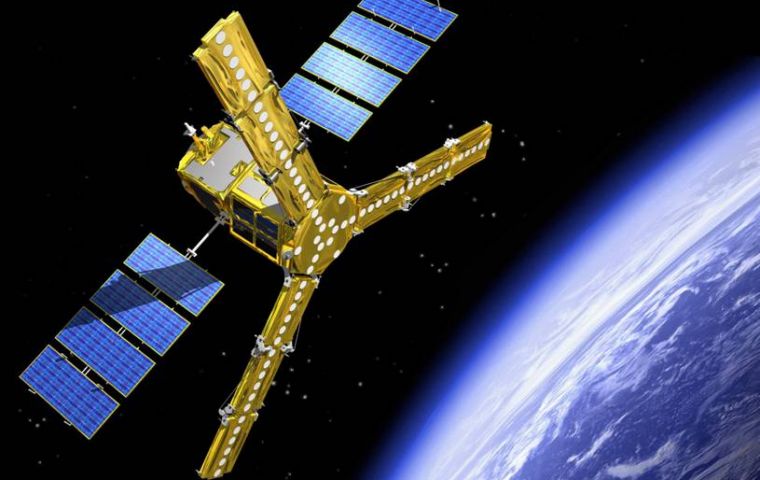MercoPress. South Atlantic News Agency
Satellite to study the Earth’s soil moisture and ocean salinity in orbit
 SMOS was launched in a Russian made Rockot from Plesetsk Cosmodrome about 500 miles north of Moscow
SMOS was launched in a Russian made Rockot from Plesetsk Cosmodrome about 500 miles north of Moscow Europe has successfully launched a new satellite to unravel the mysteries of Earth's water cycle, shedding new light on how moisture is absorbed into the atmosphere and the process's link to climate change.
The Soil Moisture and Ocean Salinity, or SMOS, satellite was launched early Monday aboard a Rockot launcher. The Rockot, made of retired ballistic missile parts, took off from Complex 133 at the Plesetsk Cosmodrome about 500 miles north of Moscow.
The European Space Agency and the French space agency, CNES, are leading the project to measure moisture levels in soil and salt quantities in the uppermost layers of the oceans. These factors play critical roles in the water cycle, determining how much water can be evaporated to fuel storms and the pattern of ocean currents across the globe.
“The importance of the mission is to provide measurements of soil moisture and ocean salinity, which are two very dominant variables in the water cycle,” said Susanne Mecklenburg, SMOS mission manager.
“Thus, we will be able to actually improve our knowledge of our water and energy cycles on the Earth, which will also support us in understanding better how the Earth system actually works and also corresponds to present changes in the Earth climate,” Mecklenburg said.
SMOS is the first satellite designed to directly study soil moisture and ocean salinity, according to scientists. SMOS is expected to execute a programmed series of events to activate the 1,451-pound spacecraft, including unfurling its two solar panels for electricity.
SMOS will deploy the three Y-shaped arms of its L-band radiometer instrument Tuesday, beginning a six-month commissioning phase to verify the integrity of the payload and calibrate data.
The satellite's instrument, called MIRAS, includes 69 individual antennas to create an array of sensors to provide high resolution data that would normally require a much larger spacecraft. Engineers hope to have the MIRAS payload fully activated within two weeks to begin testing.
Thales Alenia Space built the SMOS spacecraft and the high-tech instrument was manufactured by EADS CASA in Spain. SMOS will operate for at least two-and-a-half years in ESA's fleet of small Earth Explorers. The mission could last much longer, if funding is available.




Top Comments
Disclaimer & comment rulesCommenting for this story is now closed.
If you have a Facebook account, become a fan and comment on our Facebook Page!